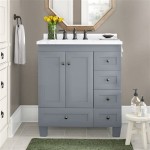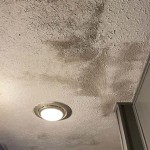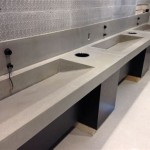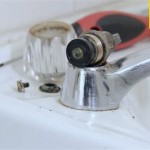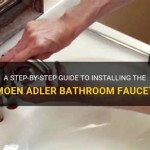Bathroom Sink Drain Won't Open: A Comprehensive Guide to Troubleshooting and Solutions
A clogged bathroom sink drain is a common household problem, often manifesting as slow drainage or a complete blockage preventing water from escaping. This issue can stem from various sources, including accumulated hair, soap scum, toothpaste residue, and small objects accidentally dropped into the drain. Addressing a clogged drain promptly is crucial to prevent further complications, such as unpleasant odors, unsanitary conditions, and potential damage to plumbing fixtures. Understanding the common causes and effective solutions empowers homeowners to tackle this problem efficiently and effectively.
Ignoring a slow-draining sink can lead to a completely blocked drain, requiring more extensive intervention. The stagnant water can become a breeding ground for bacteria and mold, posing health risks. Furthermore, water pressure buildup from a blockage can strain the pipes and potentially lead to leaks or bursts, resulting in costly repairs. A proactive approach to drain maintenance and immediate attention to drainage issues are essential for preserving the functionality and hygiene of the bathroom.
Identifying the Source of the Blockage
Before attempting any solutions, it is important to identify the potential source of the blockage. Common culprits include hair, soap scum, toothpaste, and small objects. Hair is a frequent offender, as it tends to bind together and trap other debris, forming a solid mass within the drainpipe. Soap scum, a byproduct of soap reacting with hard water minerals, can accumulate on the drain walls, gradually narrowing the passage. Toothpaste, especially varieties containing abrasive particles, can also contribute to build-up over time. Furthermore, small items such as jewelry, contact lenses, or bottle caps can accidentally fall into the drain and cause an immediate obstruction.
Visual inspection of the drain opening can sometimes reveal the cause of the blockage. Remove the drain stopper, if possible, and use a flashlight to examine the visible portion of the drainpipe. If hair or other debris is visible, it can often be removed with tweezers or pliers. However, if the blockage is located further down the drainpipe, more advanced methods may be necessary. Understanding the likely composition of the blockage can guide the selection of the most effective removal technique.
Water flow rate can offer clues about the severity and location of the obstruction. A slow-draining sink indicates a partial blockage, while a sink that completely refuses to drain signifies a more significant problem. If the water level rises slowly and then suddenly drains, it suggests that the blockage is localized and partially removable. Conversely, if the water level remains stagnant, the blockage may be more substantial and require more forceful intervention.
Simple Solutions for Minor Clogs
For minor clogs, several simple solutions can be attempted before resorting to more aggressive methods. These approaches often involve readily available household items and require minimal effort. The effectiveness of these solutions depends on the nature and severity of the blockage, but they are generally worth trying as a first step.
Hot water is often the first line of defense against minor clogs. Boiling water can help to dissolve soap scum and loosen other debris that may be clinging to the drainpipe walls. Pour a kettle of boiling water directly down the drain, taking care to avoid splashing. Repeat this process several times, allowing the hot water to sit in the drain for a few minutes between pours. Avoid using boiling water on PVC pipes, as the extreme heat can damage or warp the plastic. For PVC pipes, use hot tap water instead.
A combination of baking soda and vinegar can create a chemical reaction that helps to break down clogs. Pour one cup of baking soda down the drain, followed by one cup of vinegar. Cover the drain opening with a plug or cloth to contain the fizzing reaction. Allow the mixture to sit for 30 minutes to an hour. The resulting carbon dioxide gas helps to dislodge debris. After the allotted time, flush the drain with hot water to clear any remaining residue. Repeat this process as needed until the drain runs freely.
Physical removal of visible debris can also be effective for minor clogs. Use tweezers, pliers, or a wire coat hanger to reach into the drain opening and remove any visible hair, soap scum, or other debris. Exercise caution to avoid pushing the blockage further down the drainpipe. Dispose of the removed debris properly to prevent re-clogging.
Using a Plunger Effectively
A plunger is a common household tool that can be used to dislodge clogs by creating suction and pressure within the drainpipe. Selecting the correct type of plunger and using it properly are essential for achieving effective results.
There are two main types of plungers: cup plungers and flange plungers. Cup plungers are designed for flat surfaces, such as sinks and bathtubs, while flange plungers have a soft rubber flap that folds out to form a seal around toilet openings. For a bathroom sink, a cup plunger is typically the more appropriate choice. Ensure that the plunger cup is large enough to completely cover the drain opening.
To use a plunger effectively, first ensure that there is enough water in the sink to cover the cup of the plunger. This helps to create a tight seal and maximize the suction force. Apply petroleum jelly to the rim of the plunger cup to further enhance the seal. Place the plunger over the drain opening and push down firmly, creating a tight seal. Move the plunger up and down vigorously for several minutes, maintaining the seal as much as possible. Remove the plunger and check if the water drains. Repeat the process as needed.
If the sink has an overflow drain, it is important to block it off with a wet cloth or tape to prevent air from escaping and reducing the effectiveness of the plunger. A secure seal is critical to creating sufficient pressure to dislodge the blockage. Once the clog is dislodged, flush the drain with hot water to ensure that all debris is removed.
Exploring Drain Snakes and Augers
For more stubborn clogs, a drain snake or auger may be necessary. These tools are designed to reach further into the drainpipe and break up or retrieve blockages that cannot be reached with a plunger.
A drain snake, also known as a plumber's snake, is a flexible metal cable with a corkscrew tip that can be inserted into the drainpipe. Rotate the snake as it is fed into the drain, allowing the corkscrew tip to grab onto and break up the blockage. Once the blockage is loosened, pull the snake back out, removing the debris. A drain auger is similar to a drain snake, but it typically has a larger diameter and a more robust construction, making it suitable for more severe clogs.
When using a drain snake or auger, it is important to wear gloves to protect your hands. Carefully insert the snake into the drain opening and begin rotating it as you feed it further into the pipe. If you encounter resistance, continue rotating the snake to try to break through the blockage. Avoid forcing the snake, as this could damage the drainpipe. Once you have reached the blockage, continue rotating the snake to break it up and then slowly pull it back out, removing the debris.
After using a drain snake or auger, thoroughly flush the drain with hot water to remove any remaining debris. It is also a good idea to clean the drain snake or auger with soap and water to prevent the spread of bacteria. Store the tool in a dry place to prevent rust.
Chemical Drain Cleaners: Risks and Alternatives
Chemical drain cleaners are readily available in most supermarkets and hardware stores, but they should be used with caution. While they can be effective at dissolving some types of clogs, they also pose significant risks to both the plumbing system and the user.
Chemical drain cleaners typically contain harsh chemicals, such as sodium hydroxide or sulfuric acid, which can corrode metal pipes and damage PVC pipes. Repeated use of these chemicals can weaken the pipes and lead to leaks or bursts. Furthermore, chemical drain cleaners can release toxic fumes that are harmful to breathe. Always wear gloves and eye protection when using these products and ensure adequate ventilation.
If chemical drain cleaners fail to clear the clog, they can create a dangerous situation if other methods are attempted. Mixing chemical drain cleaners with other cleaning agents, such as bleach, can produce toxic gases. Furthermore, if a plumber is called to address the clog, they may be exposed to hazardous chemicals when disassembling the drainpipe. It is crucial to inform the plumber if chemical drain cleaners have been used.
Alternatives to chemical drain cleaners include the hot water, baking soda and vinegar, and plunger methods described earlier. Enzymatic drain cleaners are also available, which use natural enzymes to break down organic matter without harming the pipes. These products are generally safer for both the plumbing system and the environment. Employing mechanical methods, such as drain snakes and augers, is also a preferable approach to using harsh chemicals.
Preventative Measures for Maintaining Clear Drains
Preventing clogs is always preferable to dealing with them after they occur. Implementing preventative measures can significantly reduce the likelihood of drain problems and extend the lifespan of the plumbing system. Simple habits and routine maintenance can make a substantial difference.
A drain strainer is a simple and inexpensive device that can prevent hair and other debris from entering the drainpipe. Place a drain strainer over the drain opening to catch debris before it can accumulate and cause a clog. Regularly clean the strainer to remove any collected debris. These strainers are available in various sizes and materials to fit different drain openings.
Avoid pouring grease, oil, or food scraps down the drain. These materials can solidify in the drainpipe and create a sticky residue that attracts other debris, eventually leading to a clog. Dispose of grease and oil in a sealed container and throw it away with the trash. Scrape food scraps into the garbage before washing dishes.
Periodically flush the drain with hot water to dissolve soap scum and other build-up. Once a week, pour a kettle of boiling water down the drain to help keep it clear. For PVC pipes, use hot tap water instead of boiling water. This simple routine can help to prevent the gradual accumulation of debris that leads to clogs.
Regularly clean the drain stopper to remove any accumulated hair, soap scum, or toothpaste residue. This prevents the debris from falling into the drainpipe and contributing to clogs. Remove the drain stopper and clean it with soap and water. Use a brush or sponge to scrub away any stubborn residue.
I Closed My Sink Drain Stopper And Now It Won T Open Again Is There Any Way That Can Repair This Without Hiring A Plumber Quora

How To Fix A Bathroom Sink Drain Stopper 4 Easy Solutions
How To Get A Bathroom Sink Plug Removed When It Won T Un Quora

How To Fix Drain Plug That Won T Open Empty A Basin Of Water

How To Fix A Bathtub Or Sink Pop Up Stopper

5 Natural Ways To Unclog A Bathroom Sink Hiller How

How To Replace Or Maintain A Sink Pop Up Drain Assembly

How To Fix Drain Plug That Won T Open Empty A Basin Of Water

How To Fix A Bathroom Sink That Won T Drain Bfp Bay Area

How To Unclog A Bathroom Sink Hana S Happy Home
Related Posts


